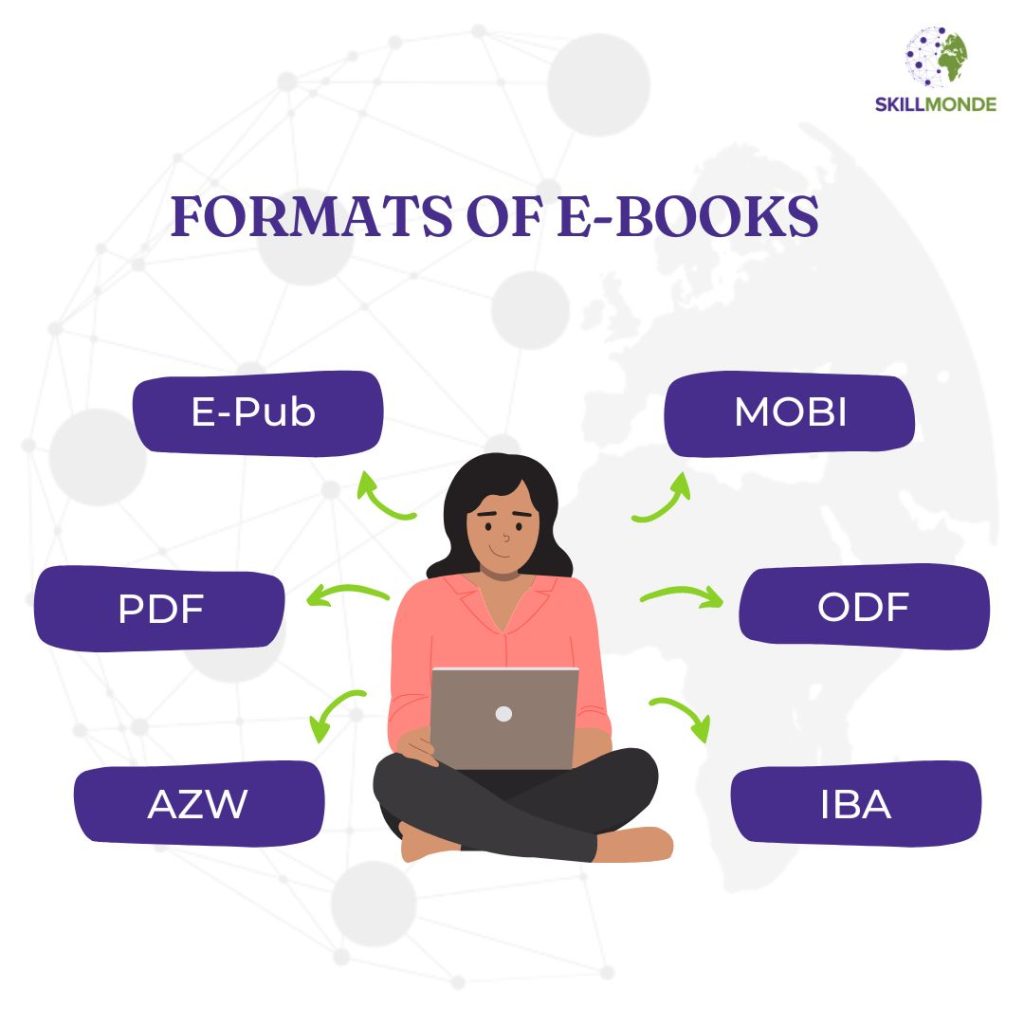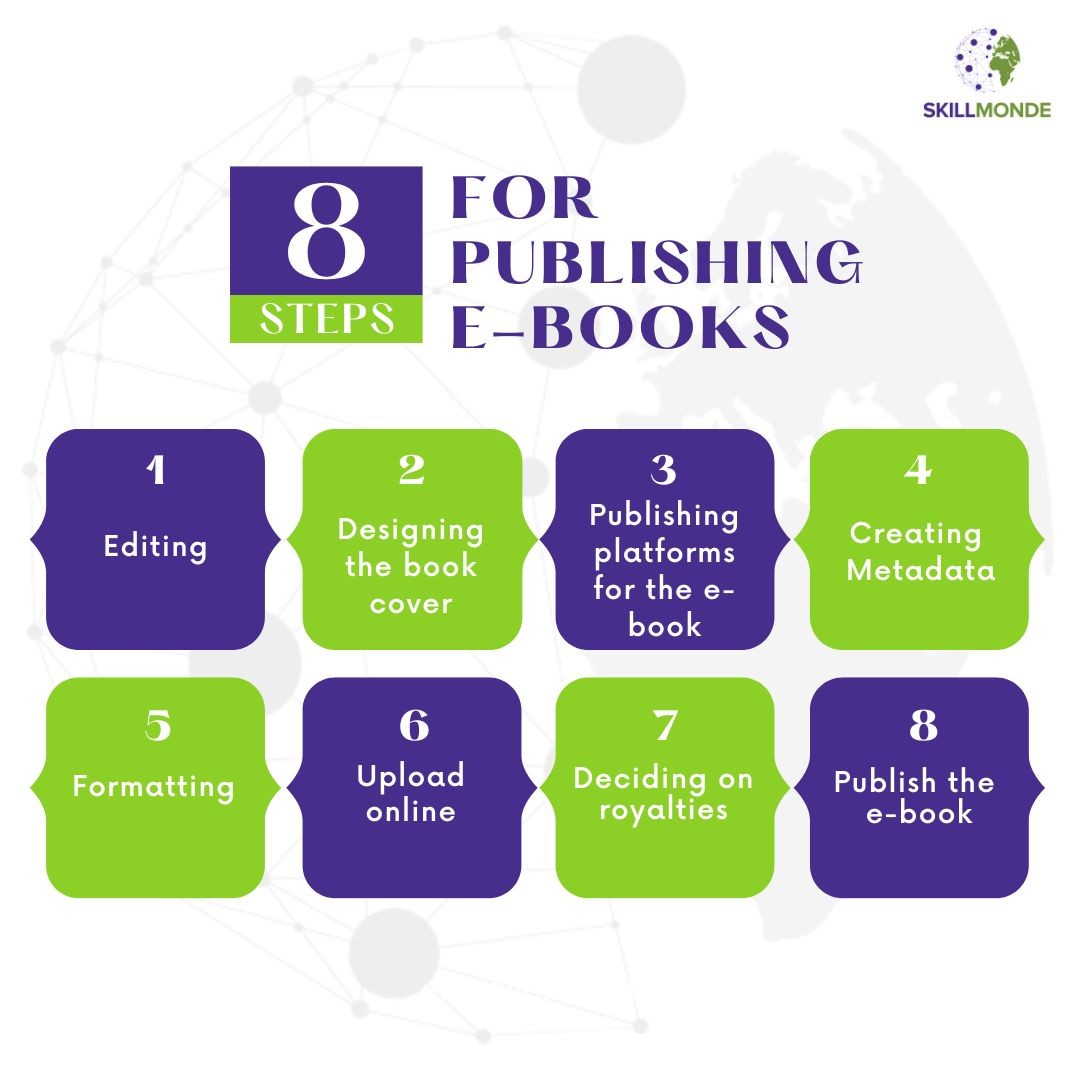E-Book production: The transition from the traditional printing press to publishing online can be compared with that of the industrial revolution where goods making was industrialized. This transition was a revolutionary step in the publishing industry. One such service of online publication is e-book production.
We are living in an electronic age where every service is turning into electronic media like e-commerce, e-mail, e-ticket, and other services. The publishing industry has also evolved to e-book production, mostly in PDF format besides printed prepress books.
Reading has become easier now without needing to wait for the printed edition or carry books around. All the reading materials can be stored in your pocket and access them anywhere you want.
The changes are evident as we see more users who prefer the comfort of availing information at their fingertips without having to carry books. E-books are gaining popularity in the marketing industry because they are in demand and proved to be profit-making businesses to the publishing industry.
What is an E-book?
E-book stands for an electronic book which can be read on all handheld devices. This is the digital form of the printed or handwritten manuscript. E-books are a fantastic method for writers to connect with readers and make them accessible to everyone.
Not everything that can be read on a digital device is an e-book. There are special features of e-books that distinguish them from other readable files like word documents, notes, and excel on electronic devices.
· E-books are released online that do not allow editing. The texts in e-books are not editable. It secures the authenticity of the writer’s work.
People across the globe that have access to e-books without this feature may change the original content without the permission of the author and question his work. This is the reason why texts in e-books like the actual printed books, cannot be edited, unlike the other documents that run on electronic devices.
· E-books should run on any electronic device. They should be easy to flow and fit on any device. With the emergence and development of reading devices and apps, e-books should fit in all the formats that make reading fun and easy for the readers.
This cannot be said for e-books in PDF formats. Texts in PDF formats follow specific dimensions that remain the same on all devices. PDF files are not device friendly. And PDFs cannot be edited.
The comfort of reading e-books
· Portability- E-books are highly portable. They can be carried anywhere inside your pocket or in a bag occupying less space.
· Easy to store- E-books can be stored on any electronic device without hassle. Since e-books can fit into the specifications of any device, they are easily stored and read on it.
· For readers who like the traditional printed version, e-books can be printed out and compiled in a book. This is also another advantage of e-books.
· E-books can be well-adjusted to the requirement of the reader. The size of the fonts can either be increased or decreased. E-books are designed for easy access to the readers.
· It is easy to search or look up e-books online. They are easily found on social media.
E-books provide a platform to the creators also that take care of the following:
· E-books save the writers from the long schedule of the printing process. After the final proofreading, the article is ready for release and garners the attention of the readers.
· The distribution of e-books saves money because they can be distributed multiple times without much cost and extra shipping fees.
· Links can be embedded in e-books to encourage readers for reading engaging content.
Formats of E-books (e-book production)

Several formats are available to store e-books. It depends on the user on what format they want to read their favourite article. Some of the most commonly used formats for their easy access and easy-to-use reasons are:
1. E-Pub- Electronic Publication is the most common format for e-books. Except for Kindles, e-books are read on all electronic devices like computers, tablets, smartphones and also small devices. The e-pub files can be customised and well-adjusted on any device which makes reading easier for the readers.
2. PDF- according to the e-book definition, PDF originally does not fit e-books. PDF, a short name for Portable Document Format, is a format that is widely used and familiar among users of electronic devices. PDF files cannot be edited and are not reflowable. Despite this fact, e-books are made available in PDF formats for their familiarity with the users.
3. AZW- This format was developed and brought to market by Amazon in the form of Kindle. This is designed to store and handle complex contents like annotations, highlights, and bookmarks. Subscription to the Amazon app is the only limitation that it has for its readers to connect to the work of their favourite authors.
4. MOBI- MOBI file extension continues to serve as a widely used format among e-readers. This format, unlike Kindle or AZW, does not support video and audio. MOBI format supports Digital Rights Management that restricts the illegal use and distribution of e-books online. The new Kindle formats are coming up in MOBI style after it was bought by Amazon in 2005.
5. ODF- ODF is short for Open Document Format that acts as an open-source program to create content. It is similar to Microsoft Office that supports all types of content creation in word, excel, PDF, etc.
6. IBA- This format is supported only on Apple devices. It is the proprietary format of Apple Company. This format supports audio, video, and other interactive elements meant for writing books exclusively on I-Book.
Steps for E-Books production:
E-book production is trending in the marketing industry as they grow revenue generation with the expansion of e-readers. Sales of e-books soar high resulting in the most profit-making business in the market. Here are steps to follow to publish e-books.
· Editing- Whether it is a printed book or an article online, the content of the book matters. A book loses the interest of its readers if it lacks elements like errors in grammar, spelling, sentence structuring, paragraph phrasing, and punctuation.
The first step to publishing an e-book is to edit the manuscript to produce more polished and refined content.
· Designing the book cover- The first impression of a book lies on its front and back covers. The same applies to e-books also. An appealing and attractive front cover draws the attention of readers to pick it and the back cover gives an overview of it. The back cover that contains the gist of the book is most crucial. It’s a rate race in the digital world to outdo others.
· Publishing platforms for the e-book- The selection of a platform to publish e-books is a major part of the publication process. It decides the fate of your work. Distribution and marketing sell more than the content in the publishing industry.
Whether it is Amazon Kindle, I-book, or any other e-reading platform, the e-book should be ready for all digital platforms.
· Creating Metadata- Once the e-book is all set to release on the desired publishing platform, there is a requirement to fill in the fields of these platforms for easy access to readers. These may require specifying the genre of the e-book, keywords, theme, or any specific title. This method makes it easier for the readers to search for the articles to read.
· Formatting- The e-book that has been edited, the cover designed, and the platform chosen to undergo the process of formatting to fit into the specifications of the file format. Formatting will design your book in the right layout desired in the digital platform before it goes to publishing.
· Upload online- Formatted e-book is all set to be uploaded on the selected publishing platform. This stage gives a preview of your e-book. It enables one to check how the e-book is presented to the readers.
DRM can be activated at this stage.
· Deciding on royalties- The royalty charge varies depending on the publishing platform.
· Publish the e-book- The last step after deciding on and agreeing on the royalty charges of the digital platform, the e-book is all set to publish online and go live to the e-readers.
Publication of e-books is a methodical process that demands the same amount of detailing and formatting stages that a prepress printing needs. The demand for e-books is evidently growing among students with the incorporation of smart classes and CMS in the education sector.
Hiring a publication house to give a professional touch to your content and publish it as an e-book is the wisest thing to do.
FAQs on E-book Production
1. What is an E-book?
Answer: A digital publication that can be read on a computer, tablet, or e-reader is known as an e-book, or electronic book.
2. What advantages do e-books have over printed books?
Answer: You may reach a larger audience, cut production expenses, and give your audience a more comfortable and accessible reading experience by producing an e-book.
3. How can I make an electronic book?
Answer: You may either engage a specialised company to produce your e-book or you can do it yourself with programmes like Adobe InDesign or Microsoft Word.
4. What file formats should I use for my e-book?
Answer: The two most popular e-book file types are EPUB and MOBI. While MOBI is the format utilised by Amazon Kindle devices, EPUB is an open standard that works with most e-readers.
5. How can I turn my work into an electronic book?
Answer: With software like Calibre or Sigil, or by employing an online conversion service, you can convert your manuscript to an e-book format.
6. What should e-book designers keep in mind?
Answer: You should take into account elements like font style and size, image positioning and formatting, general layout and text readability while creating an e-book.
7. How do I get my e-book available on the market?
Answer: Your e-book can be sold on websites like Amazon, Barnes & Noble, and Apple Books, as well as on your own website and on social media.
8. How should I advertise my e-book?
Answer: You can use techniques like social media marketing, email marketing, book reviews, and book giveaways to advertise your e-book.
9. What typical errors should you steer clear of while creating an e-book?
Answer: While creating an e-book, you should be careful to avoid making common blunders like bad formatting, a lack of proofreading, and failing to optimise your e-book for search engines.
10. How can I gauge how well my e-book is doing?
Answer: By monitoring sales and downloads, customer reviews and feedback, and website traffic and interaction using analytics tools, you may gauge the success of your e-book.
